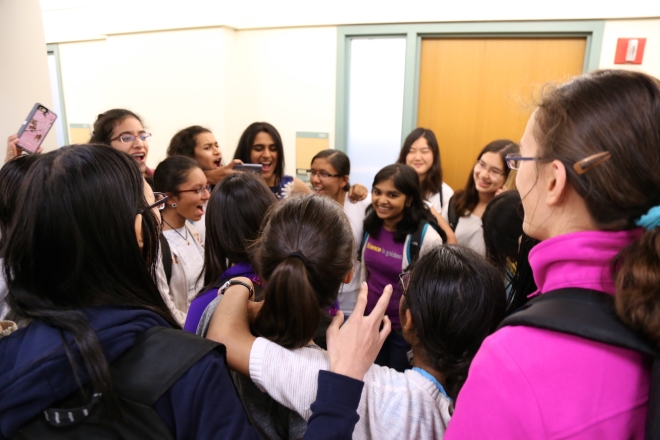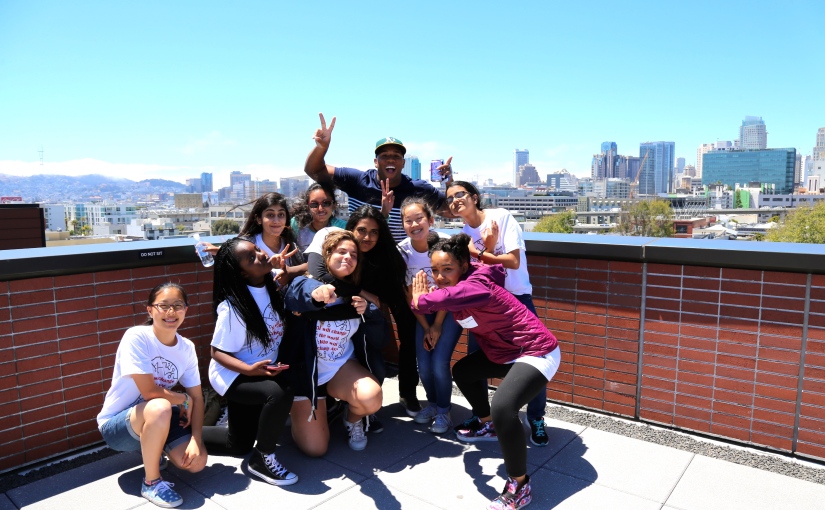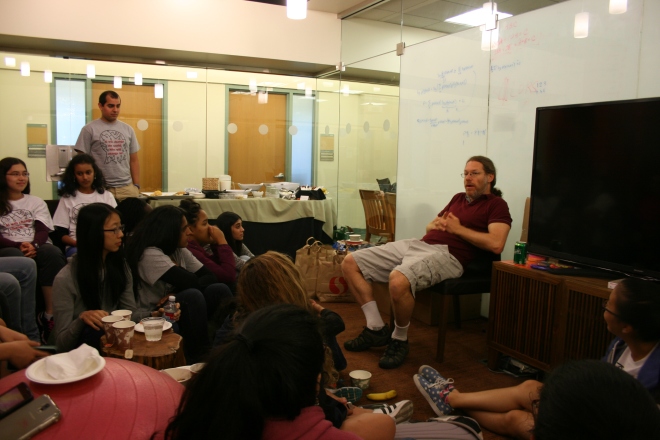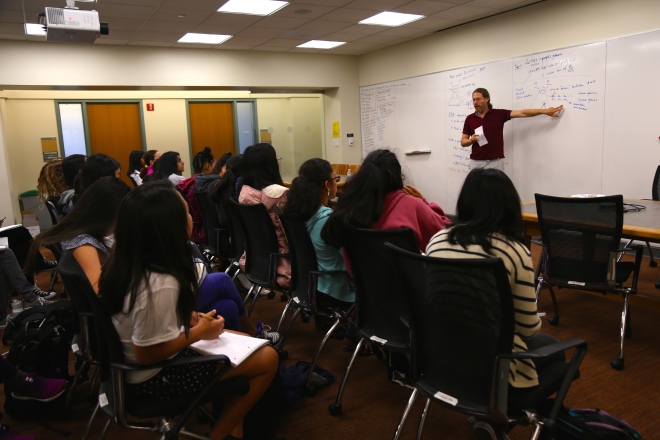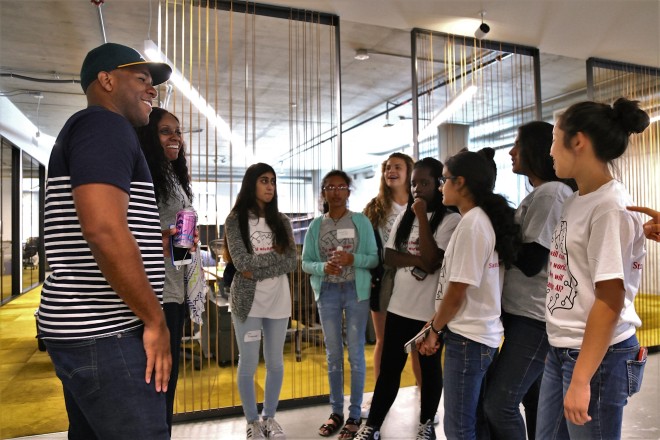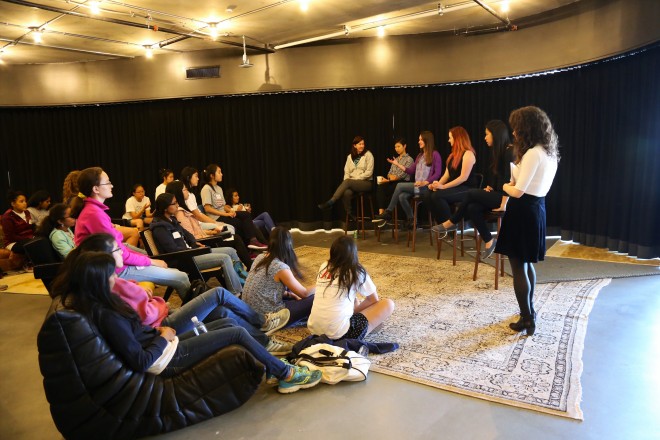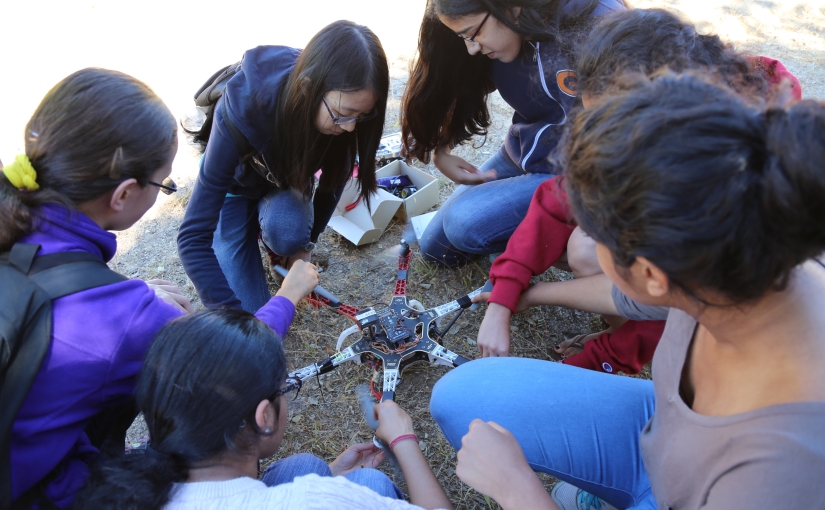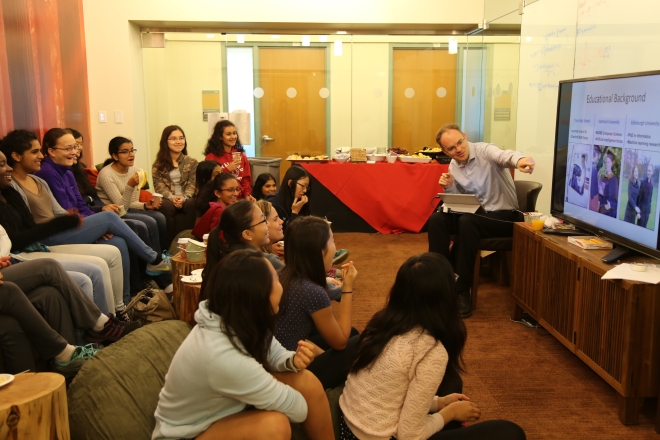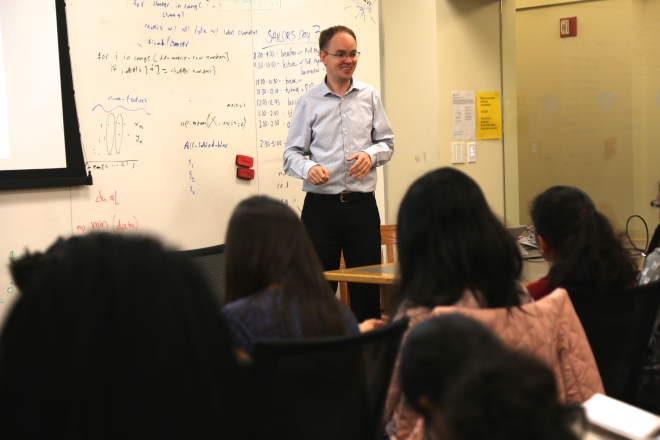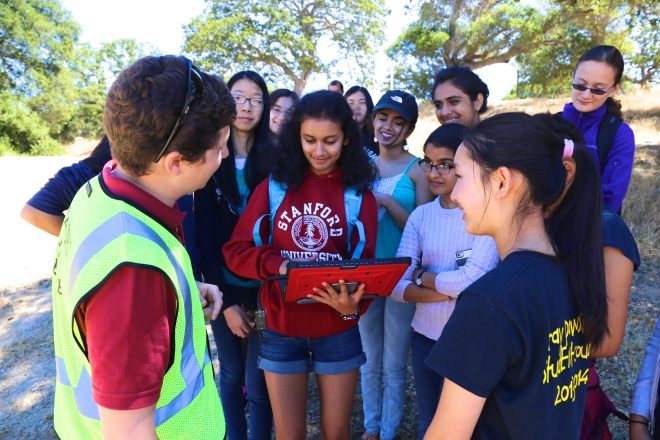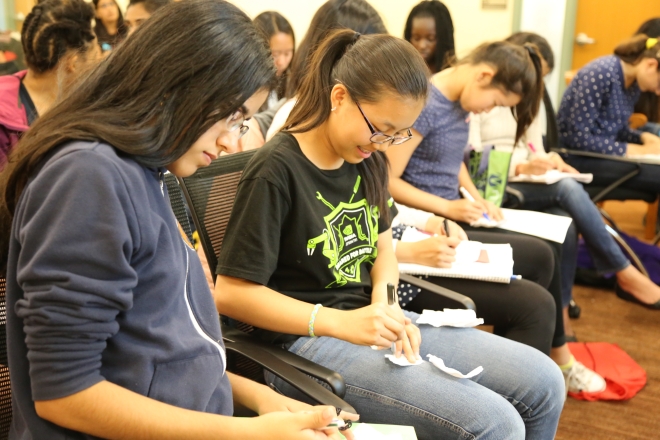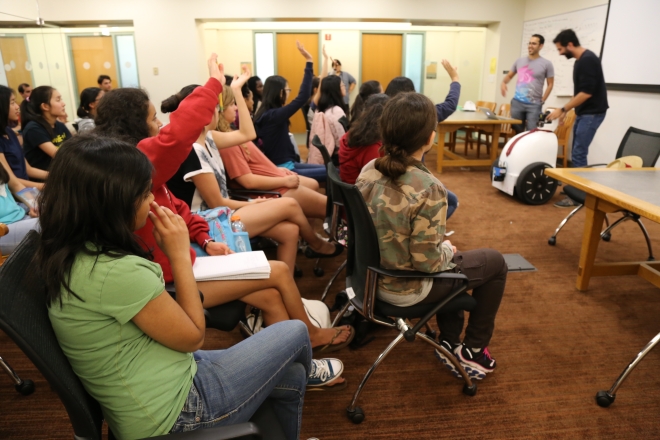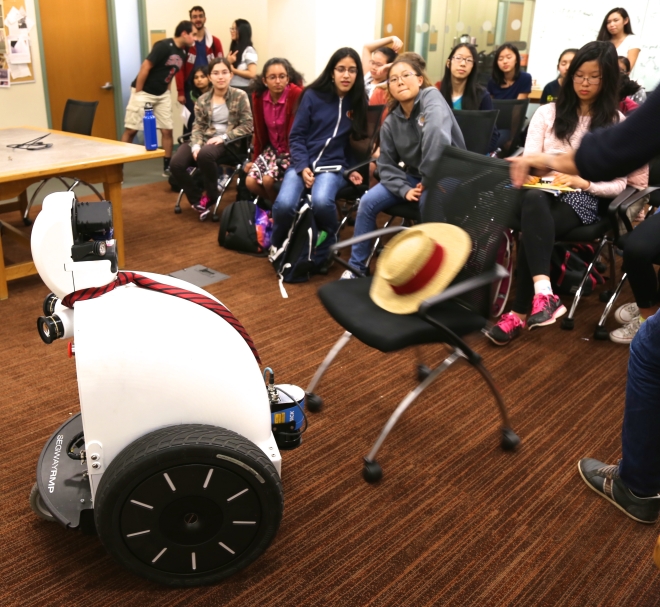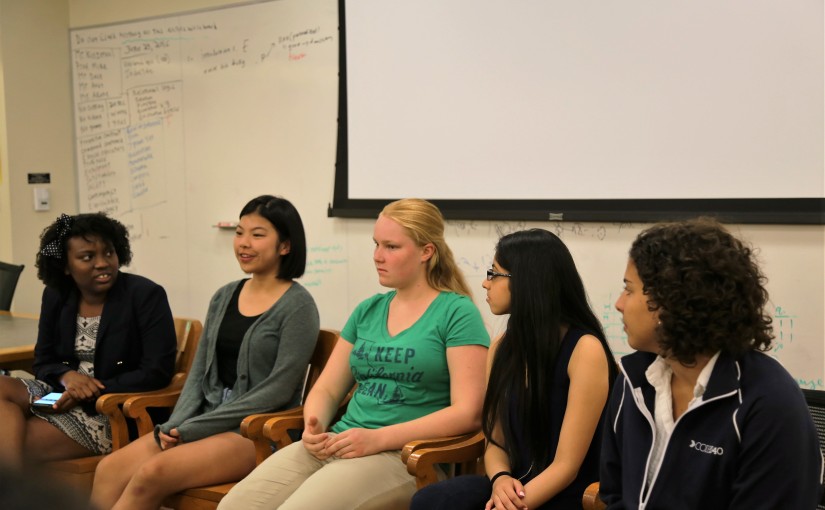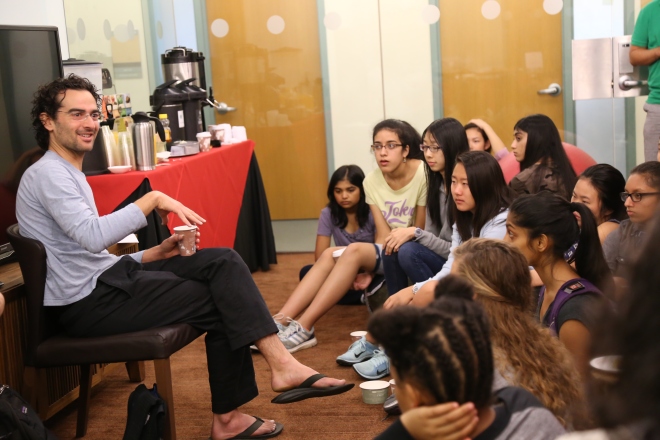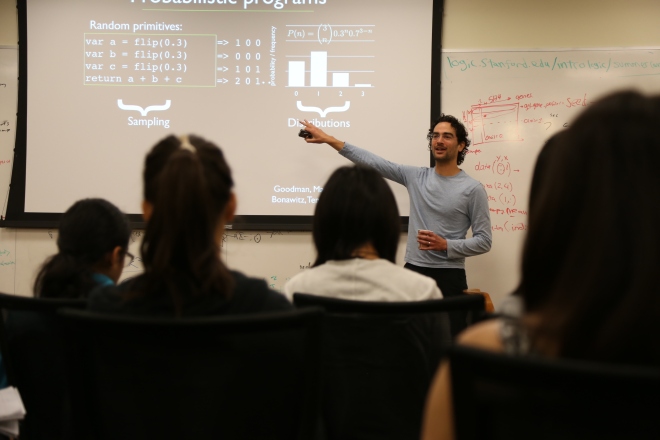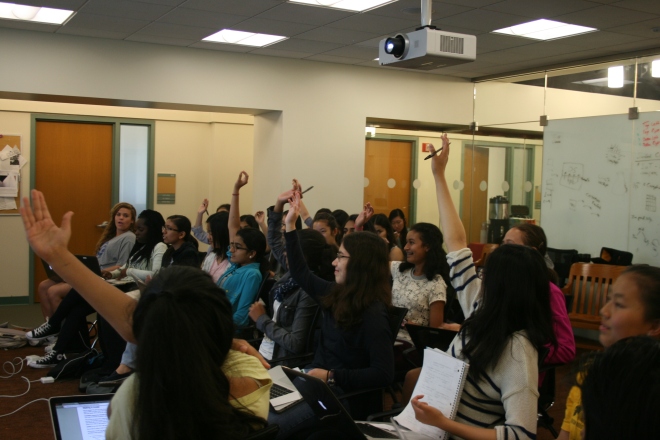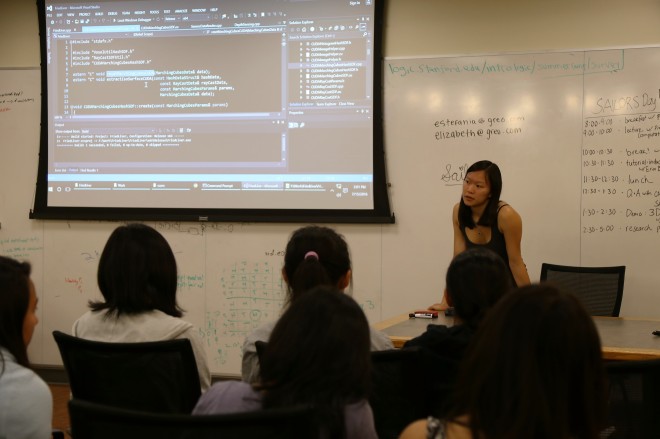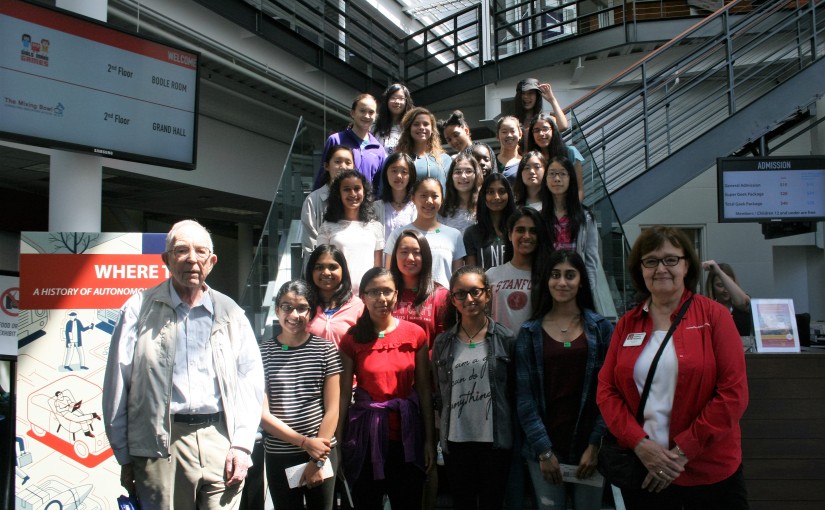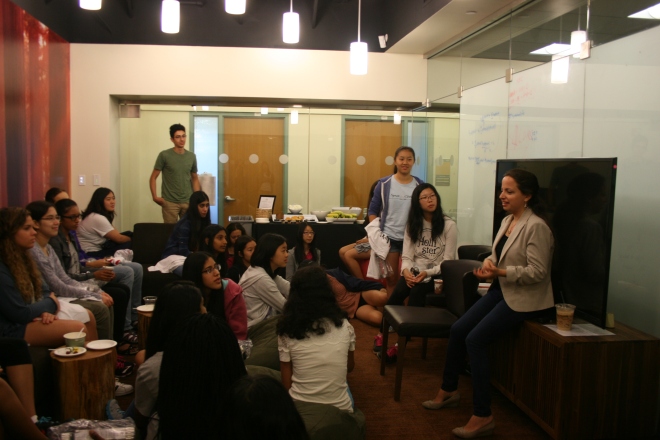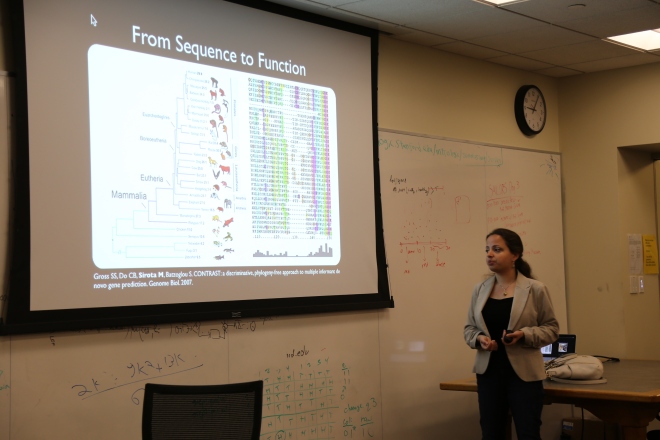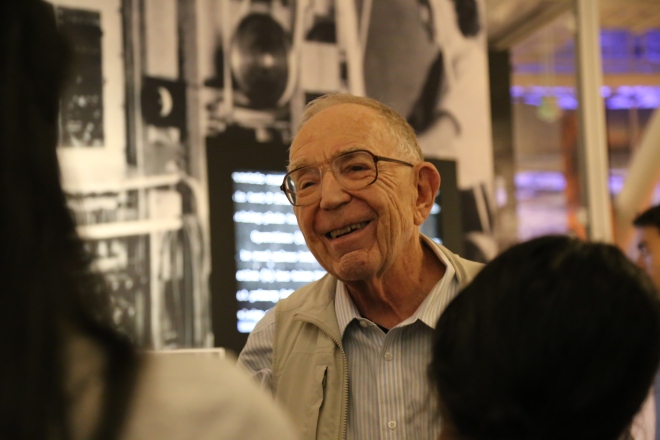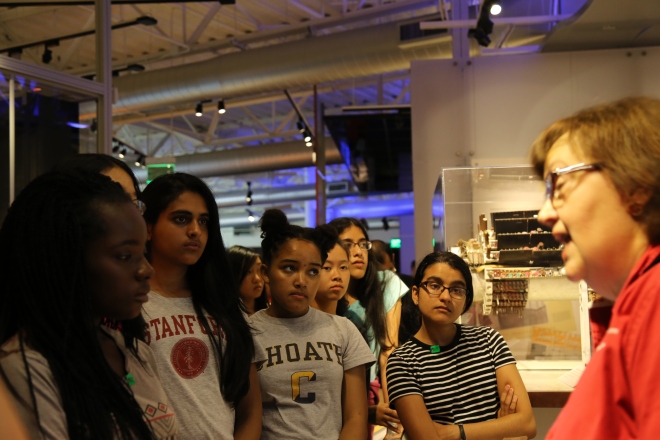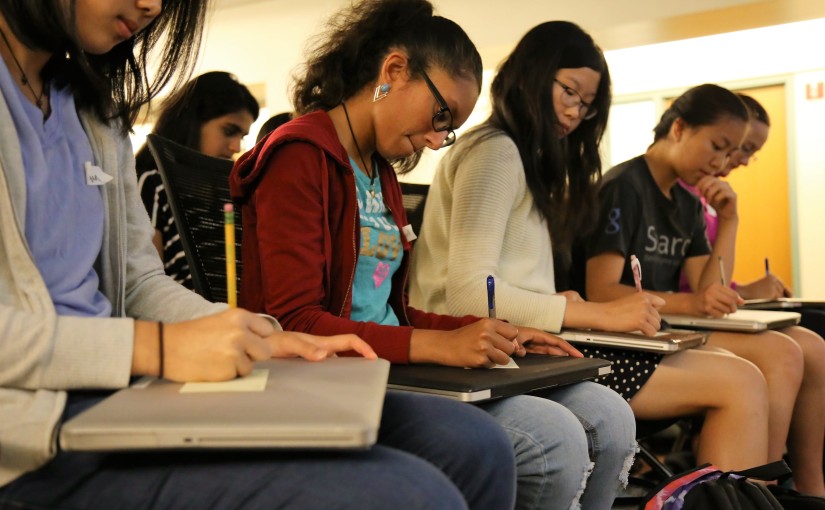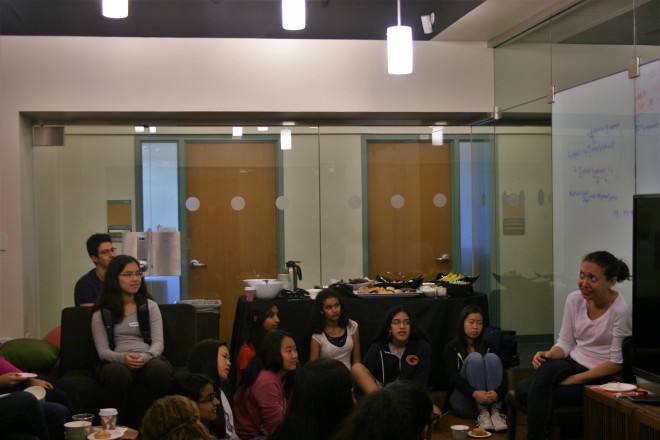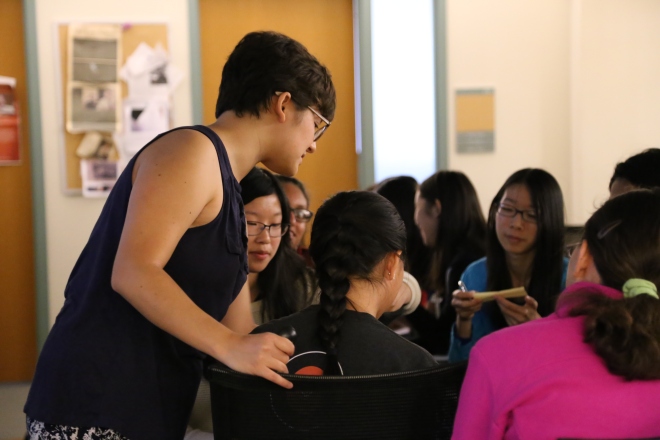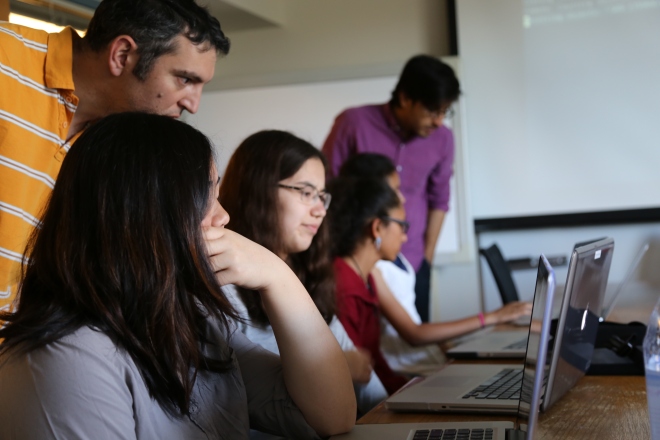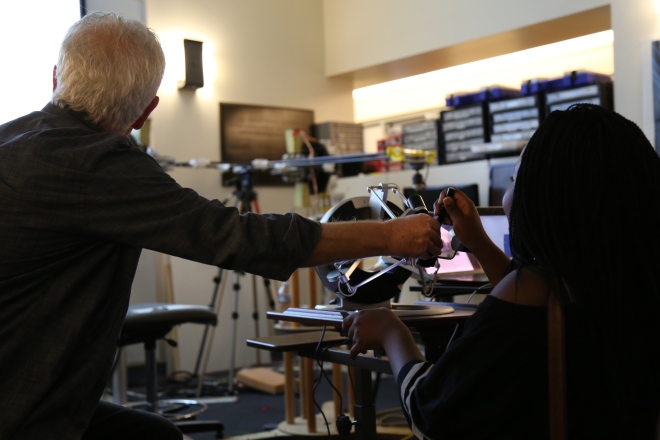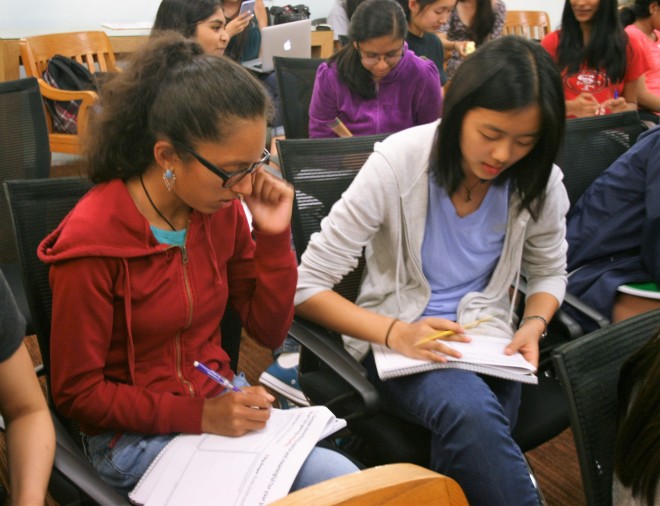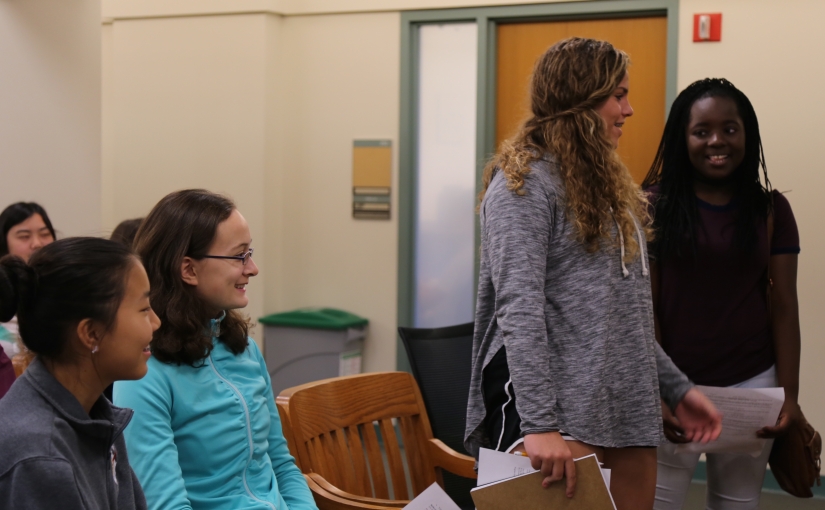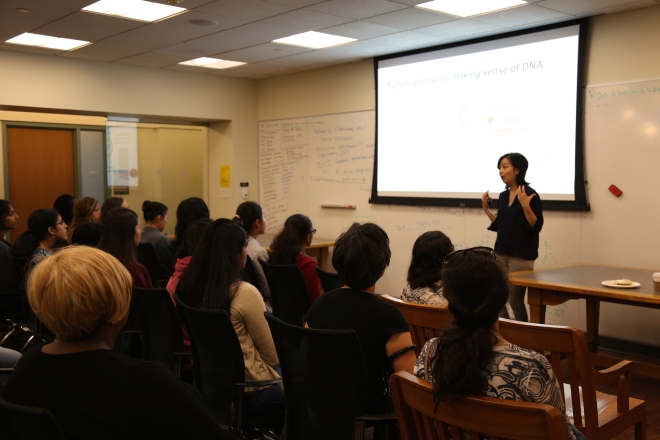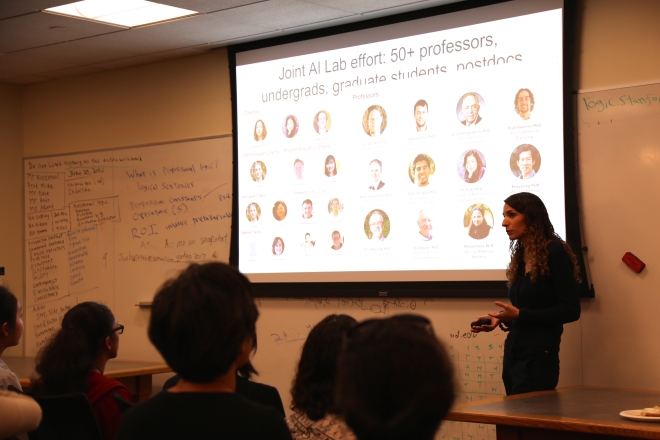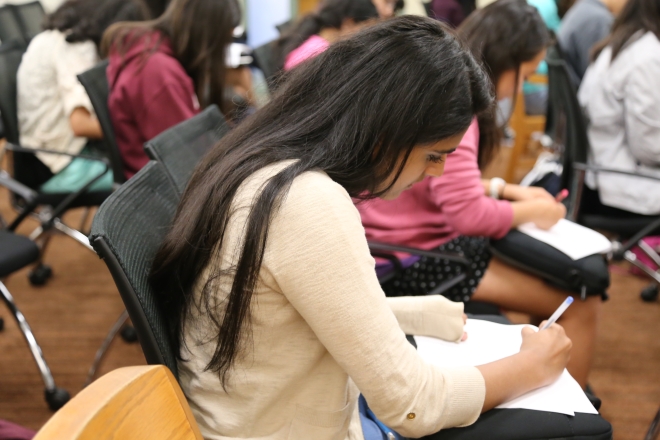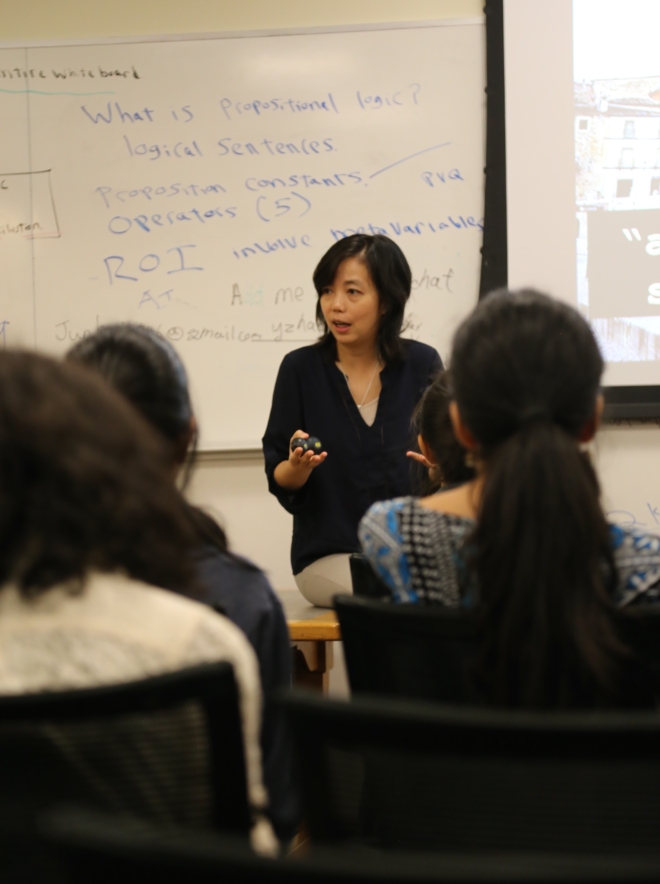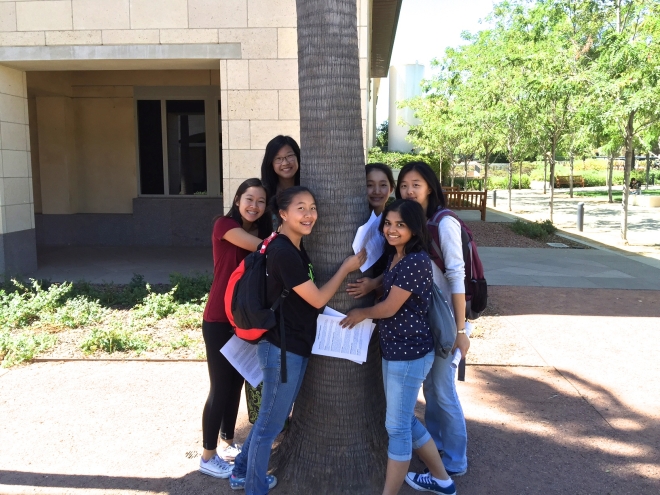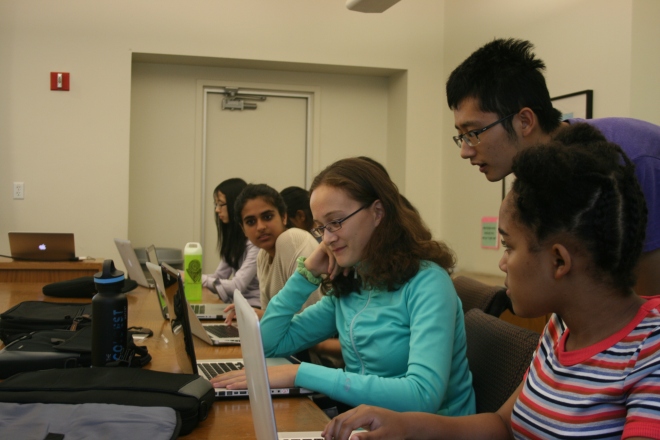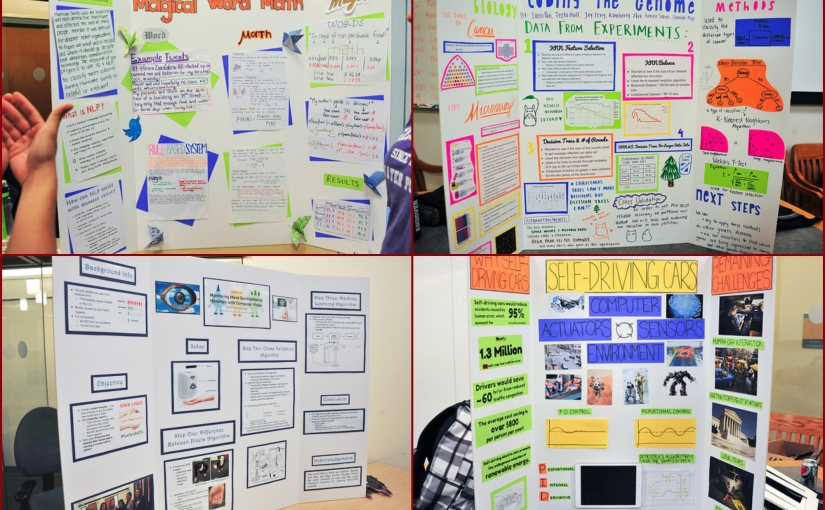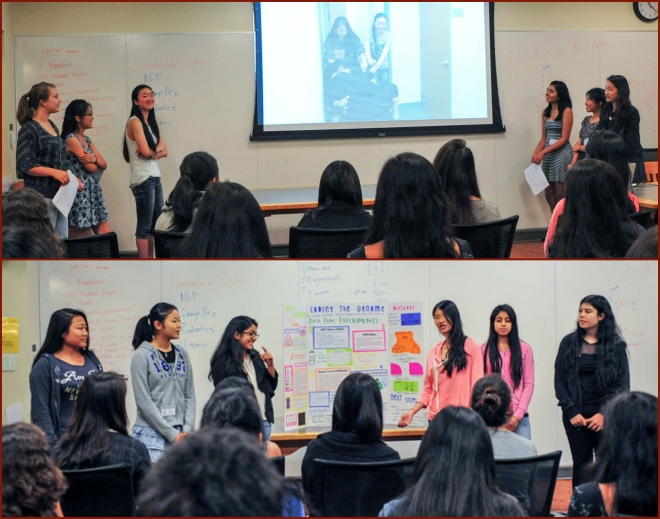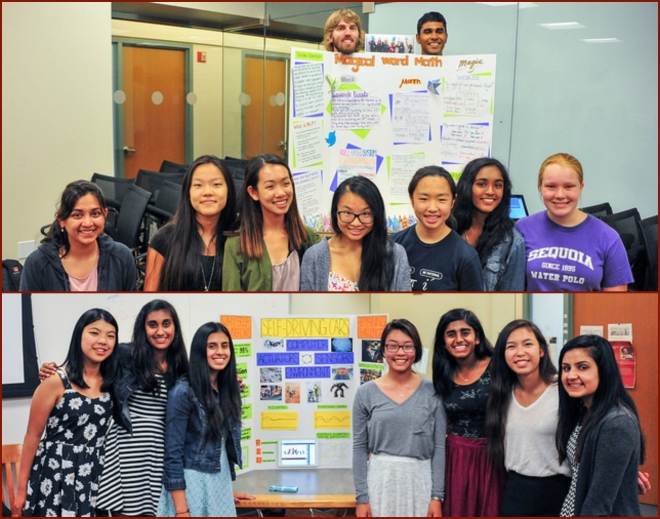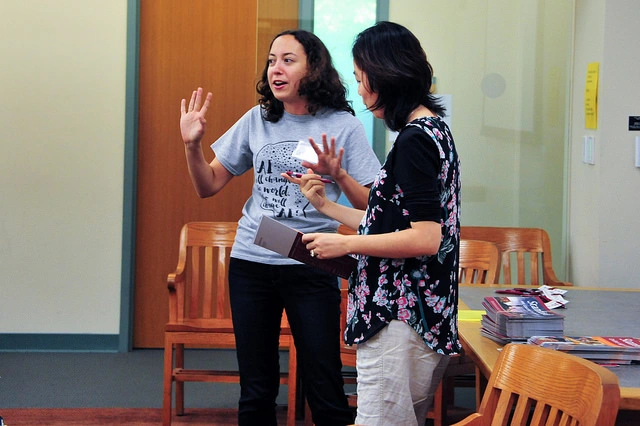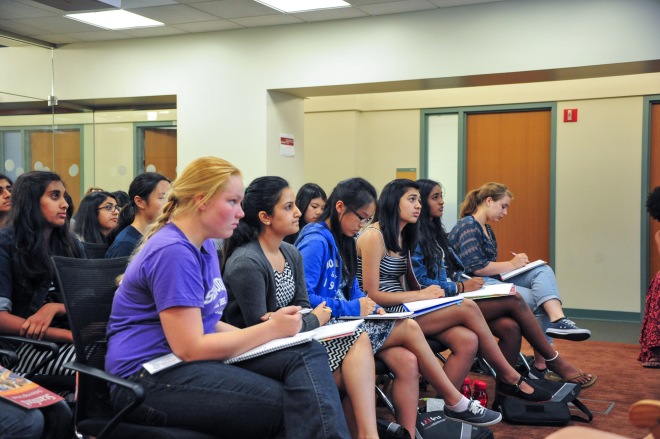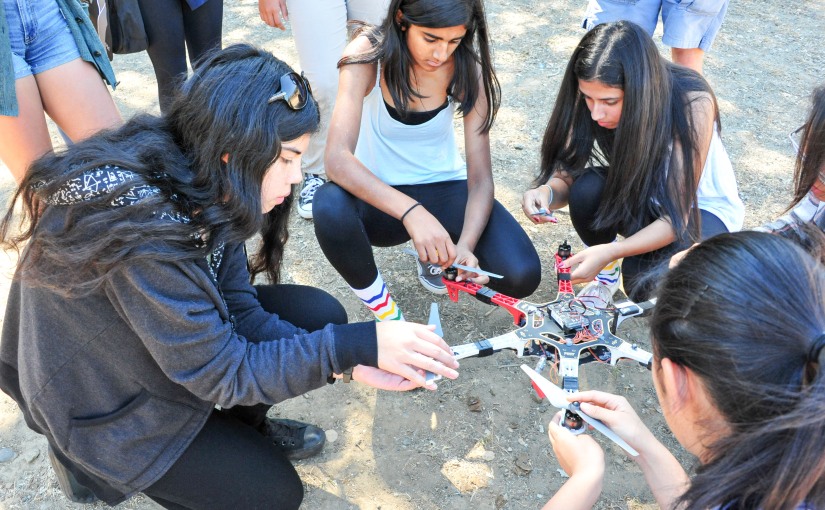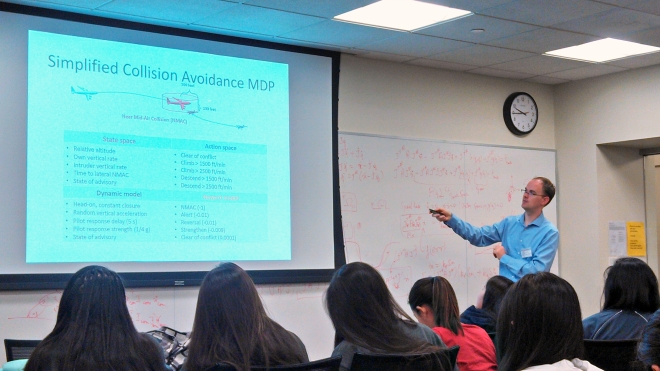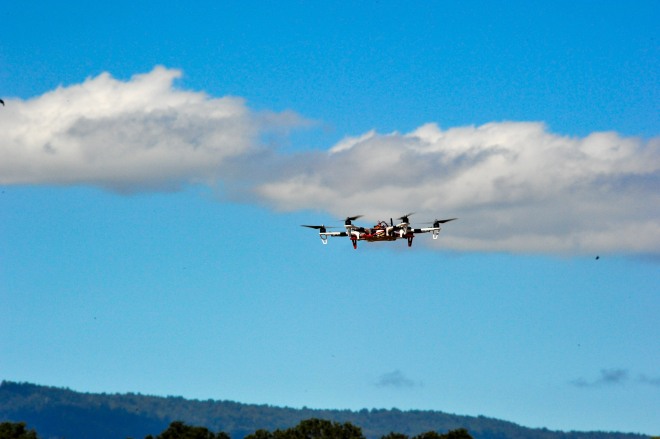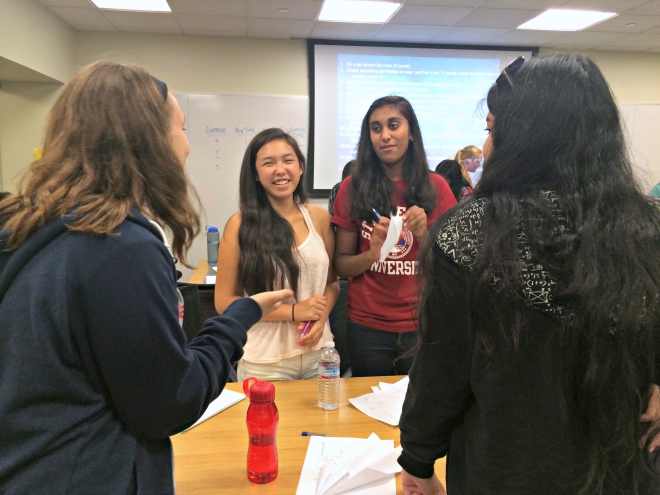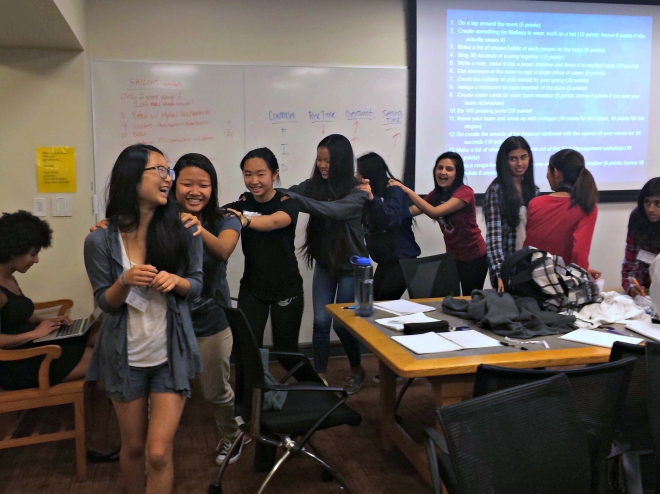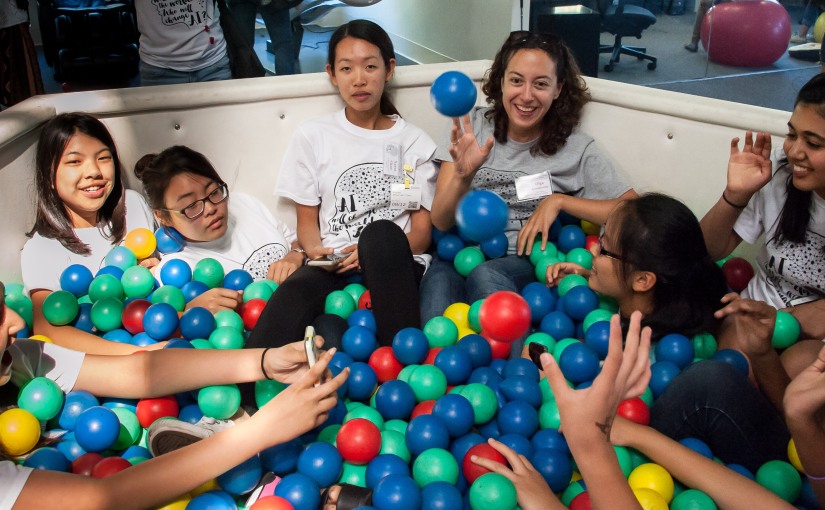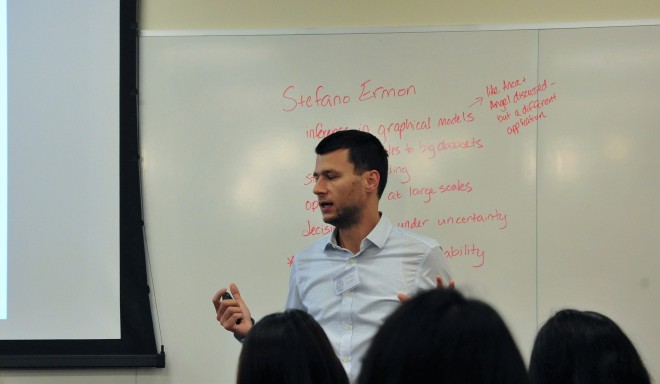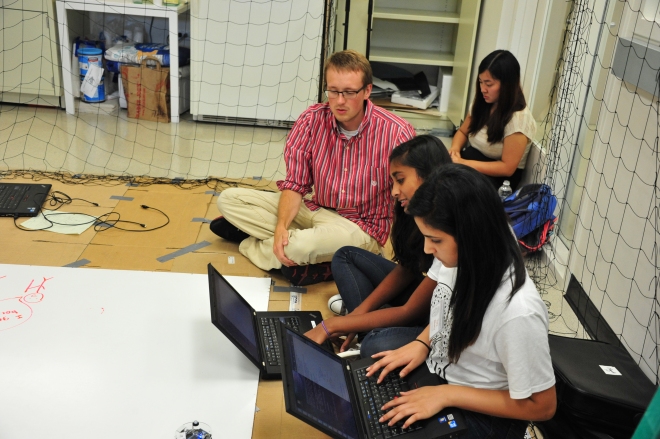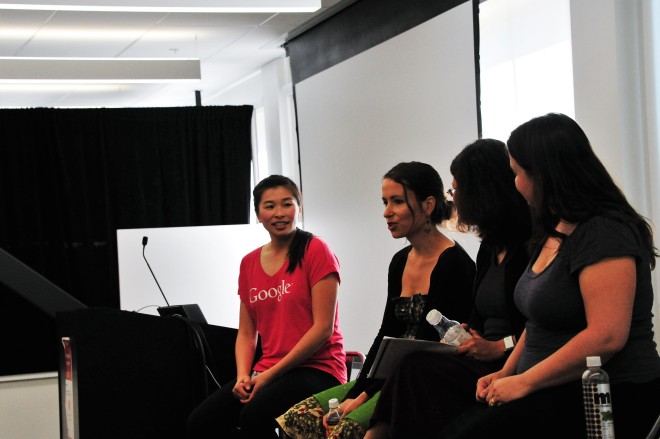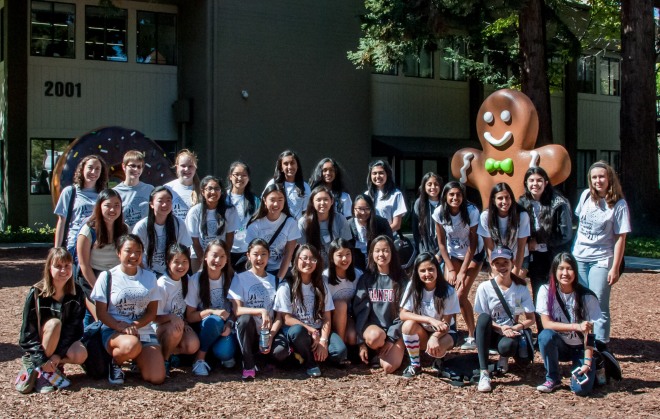After a quick breakfast, the girls jumped into their last research project session. They worked hard to put the finishing touches on their project boards and rehearse their upcoming presentations.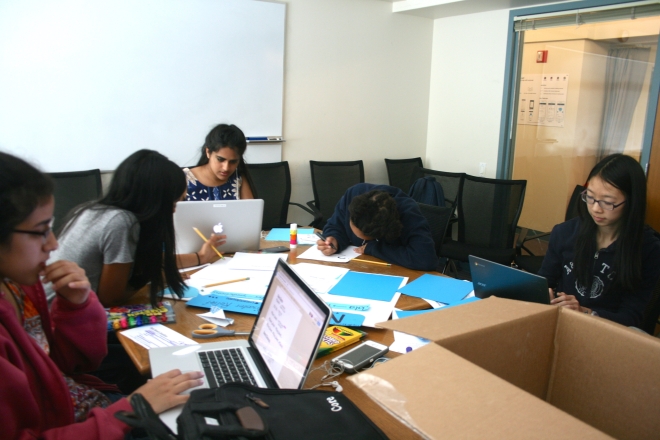
Much like last year, each project group had the chance to present everything they’d been working on for the past two weeks. Campers didn’t just explain the technical details of their work, they also viewed their AI research through the lens of social good. In particular, the four groups covered how to utilize natural language processing to aid disaster relief, using computer vision to make hospitals safer, writing machine learning algorithms to detect various cancers in the human genome, and programming autonomous cars to revolutionize transportation. We’re so proud of what everyone has learned and accomplished in just two weeks!
SAILORS students and staff took a camp photo at lunch, and then moved into the poster session portion of the afternoon. Members of the Stanford AI Laboratory were all invited to take a look at the four projects and ask questions.
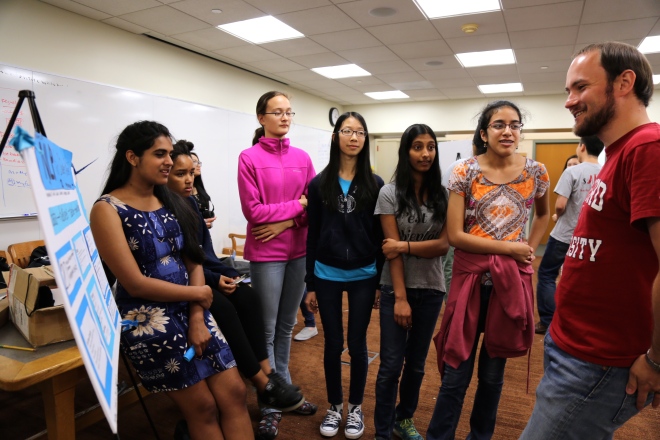
Following the poster gallery walk was the very last personal growth session: staying involved in AI, and in computer science as a whole. Representatives from organizations like she++, Girls Teaching Girls to Code, and the National Center for Women & Information Technology (NCWIT) came to speak to the girls about potential next steps they could take to expand their skill set and keep in touch with the community.
The day was concluded with an exit survey, which mirrored the questions in the survey the girls took on the first day of camp. As Profei-Fei Li had explained during orientation, rigorous and quantitative evaluation is an integral part of SAILORS. Even though the official program has ended, the curriculum chairs will continue to work tirelessly to read through the girls’ feedback in order to continue improving this initiative for next year.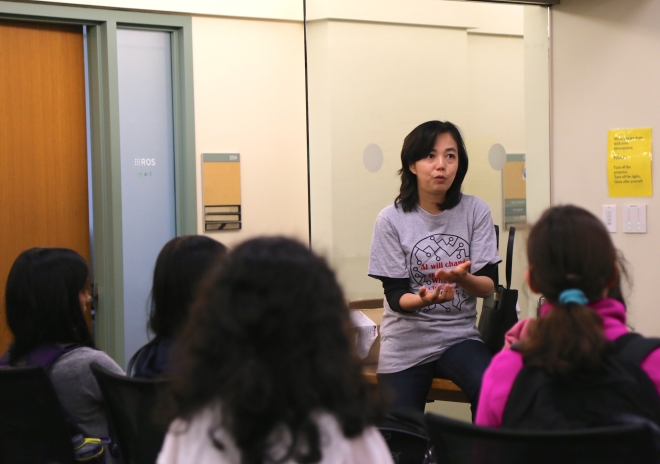
A giant thank you to everyone who made SAILORS 2016 the huge success that it was: professors, graduate students, guest speakers, project mentors, sponsors, last year’s alumni, and especially the students and their parents who made the effort to come out to Stanford every day for the past two weeks! It’s been a blast, but our hope is that this summer is only just the beginning. We’re beyond excited to add another 24 motivated girls to our alumni network and continue to champion diversity in the hugely promising field of artificial intelligence.